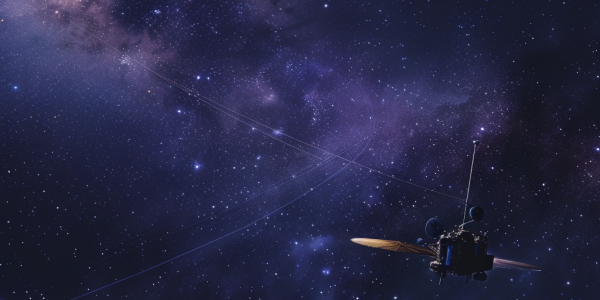Sunita Williams Prepares for Return to Earth While Advancing Space Research
ISS Commander Sunita Williams prepares for her February 2025 return to Earth, conducting essential maintenance and groundbreaking research. Collaborating with NASA’s Butch Wilmore, she utilizes advanced technology for eye examinations and engages in studies on microbes and micro-algae, crucial for sustainable space missions. Williams also inspires students through virtual outreach, emphasizing the importance of STEM education.
NASA’s Webb Telescope Challenges Planet Formation Theories with New Discoveries
NASA’s James Webb Space Telescope has uncovered groundbreaking evidence of protoplanetary disks around ancient stars in the Small Magellanic Cloud, challenging existing theories of planet formation. These findings reveal that disks persist much longer than previously thought, enhancing our understanding of how planets form and the potential for life beyond Earth.
Astronomers Double Known Dark Comets, Unraveling Cosmic Mysteries
Astronomers have recently doubled the known count of dark comets, mysterious objects that resemble asteroids yet display comet-like behavior. A groundbreaking study published in the Proceedings of the National Academy of Sciences reveals seven new dark comets, raising questions about their origins and their potential role in delivering life-sustaining materials to Earth. This research sheds light on solar system evolution and the possibility of life beyond our planet.
Exploring the Sun’s Corona: Insights from Recent and Upcoming Solar Eclipses
The sun’s corona, visible during total solar eclipses, has captivated scientists and skywatchers alike. The recent eclipses on April 20, 2023, and the upcoming one on April 8, 2024, provide unique opportunities to study the sun’s dynamic atmosphere, especially as it reaches solar maximum. Discover how these celestial events impact space weather and Earth, showcasing the intricate beauty of the sun’s outer layer.
NASA’s SWOT Satellite Unveils Most Detailed Ocean Floor Map to Date
NASA’s SWOT satellite has created the most detailed ocean floor map to date, revealing hundreds of uncharted underwater features. Launched in December 2022, this innovative technology enhances our understanding of oceanography, tectonic movements, and marine ecosystems. Discover how SWOT’s groundbreaking findings are set to impact climate research and ocean conservation efforts.
NASA Completes Integration of Roman Space Telescope Payload
NASA has successfully integrated the payload for the Roman Space Telescope, a key milestone in its mission to explore dark energy, dark matter, and exoplanets. With advanced instruments like the Coronagraph and a 300-megapixel Wide Field Instrument, the telescope aims to enhance our understanding of the universe. Scheduled for launch in May 2027, the Roman mission promises groundbreaking discoveries in astrophysics and cosmology.
Colossal Thunderstorms on Jupiter Captured in Stunning Detail
Astronomers have captured stunning images of two colossal thunderstorms on Jupiter, each larger than Earth, located in the Southern Equatorial Belt. These massive storms, observed by astrophotographer Michael Karrer, raise intriguing questions about Jupiter’s dynamic atmosphere and its potential changes. Experts estimate these storms penetrate deep into the gas giant’s atmosphere, reaching depths of 60 miles. As the scientific community monitors these phenomena, discussions about their impact on Jupiter’s appearance and the search for life on its moons continue to captivate space enthusiasts.
SpaceX Secures $843 Million NASA Contract for ISS Decommissioning
Elon Musk’s SpaceX has secured an $843 million contract with NASA to decommission the International Space Station (ISS) as it prepares for its operational end after 2030. This crucial initiative aims to prevent Kessler Syndrome by safely guiding the ISS back to Earth, marking a significant transition in space exploration and environmental stewardship.
New Study Reveals Comets’ Role in Earth’s Water Origins
Recent research reveals that comets, particularly Comet 67P/Churyumov-Gerasimenko, played a crucial role in delivering water to Earth billions of years ago. This study highlights the molecular similarities between water on this comet and Earth’s oceans, suggesting that celestial bodies significantly contributed to our planet’s water supply. Understanding these origins not only enhances our knowledge of Earth’s history but also opens new avenues in astrobiology, exploring the potential for life on other planets.
NASA Restores Communication with Voyager 1 After Months of Silence
NASA has successfully reestablished communication with Voyager 1, the iconic space probe that has been exploring the cosmos since 1977. After overcoming a significant communication breakdown, engineers are now able to access valuable scientific data as Voyager 1 continues its historic journey through interstellar space. This achievement highlights NASA’s engineering prowess and the ongoing quest for knowledge in space exploration.










